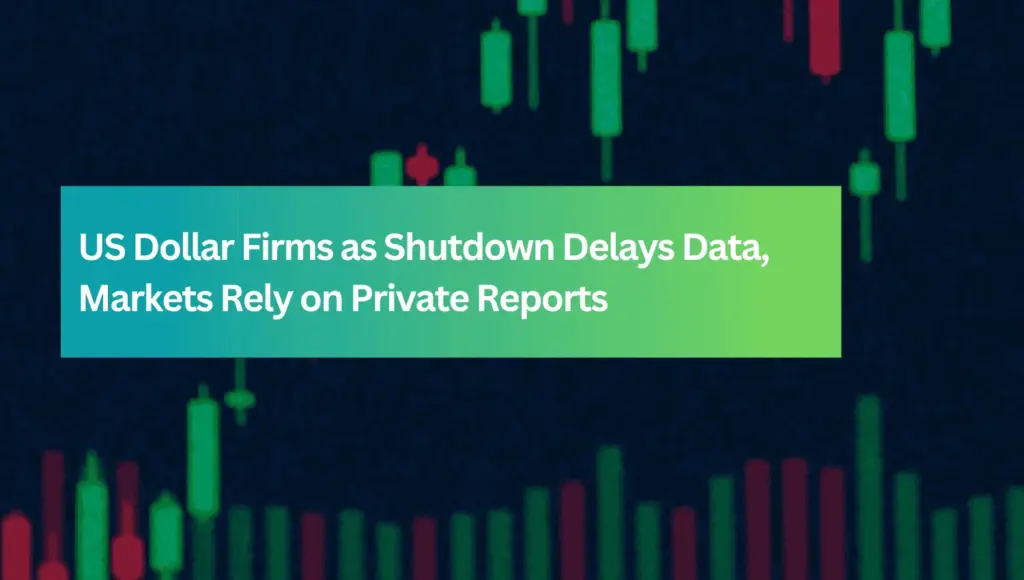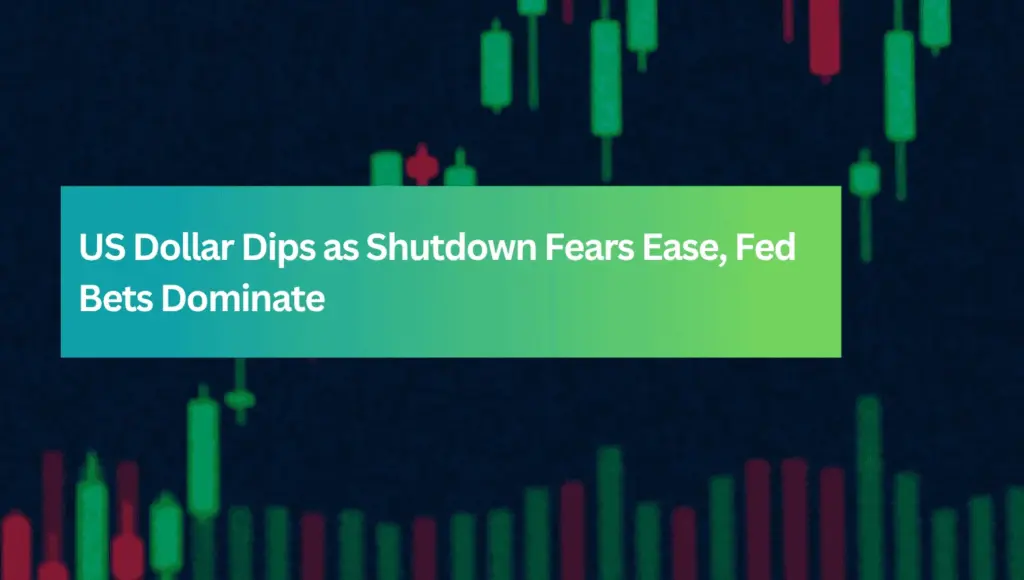News

The dollar staged a rebound on Thursday as traders adjusted to the absence of key U.S. releases during the government shutdown. With jobless claims and factory orders unavailable, attention turned to private indicators. Challenger reported September job cuts dropped 37% month-on-month to 54,064, steadying sentiment after ADP’s weak report. Still, nearly 950,000 cuts year-to-date mark the worst since 2020, underscoring labor market fragility. The delayed nonfarm payrolls report leaves investors without the usual centerpiece for monthly direction. Fed and Political Signals Dallas Fed President Lorie Logan defended September’s cut as insurance against sudden labor weakness but said cooling remains gradual and signaled no rush to ease further. Treasury Secretary Scott Bessent confirmed the first round of Fed chair interviews will conclude next week, with three to five names to be presented to President Trump. The overlap of politics and monetary policy continues to add uncertainty. FX Market Moves The greenback found support as major pairs slipped. EUR/USD fell to a four-session low, with technicals flashing bearish. USD/JPY printed a doji candle, reflecting hesitation ahead of BOJ Governor Ueda’s remarks. Sterling broke its string of higher lows, raising risk of a bearish crossover, while AUD/USD leaned lower as fading RSI momentum on daily and monthly charts signaled pressure. A BoE survey added to pound weakness, showing businesses at their weakest hiring outlook since 2020 and inflation expectations at their fastest pace since early 2024. Risk Assets and Commodities Equities posted modest gains, with the S&P 500 up 0.14%, lifted by tech strength. Oil fell 2.04%, extending a four-day slide ahead of OPEC+ talks, while gold slipped 0.38% as dollar strength dampened demand. Copper rose 1.24% on supply concerns despite soft demand from China. By the close: DXY +0.12%, EUR/USD -0.04%, GBP/USD -0.21%, AUD/USD -0.21%, USD/JPY +0.05%.

The dollar softened on Wednesday before regaining ground as optimism grew that a potential U.S. government shutdown would be brief. Vice President JD Vance reassured investors, saying he did not expect a prolonged standoff. Fitch Ratings echoed that sentiment, noting the dispute carried no immediate sovereign rating implications. Equity markets welcomed the easing fears, with healthcare leading gains in the S&P 500. Economic Data and Fed Outlook ADP payrolls showed a steep 32,000 decline in September, the sharpest in over two years, stoking bets on further Fed rate cuts. ISM data signaled manufacturing edging toward recovery with easing price pressures. Challenger job-cut data will provide another read on labor health. Boston Fed’s Susan Collins signaled openness to more easing, while New York Fed’s John Williams supported cuts but reiterated the 2% inflation target as policy anchor. Politics and Policy The Supreme Court set a January hearing on Trump’s effort to remove Fed Governor Lisa Cook, a case with implications for central bank independence. Trade and industrial policy also remained in focus: Trump said soybeans would headline talks with Xi Jinping, while the Department of Energy acquired a 5% stake in Lithium Americas’ Thacker Pass project alongside GM. FX and Global Moves EUR/USD posted a doji near its 21-day average, but bulls need a break above 1.18 for momentum. Sterling slipped below 1.35 despite recent higher lows, while USD/JPY pared early losses, returning to its Ichimoku cloud. The Aussie edged higher on firmer gold prices, while the franc was steady ahead of CPI data. Bonds, Equities, Commodities Treasuries steepened as yields fell 2–6bps, with the 2s–10s spread widening to +56.1bps. The S&P 500 rose 0.41%. Oil slipped 0.69% on rising U.S. inventories, gold gained 0.18%, and copper added 0.51%. By the close: EUR/USD +0.01%, GBP/USD +0.29%, AUD/USD +0.05%, USD/JPY -0.58%. DXY -0.06%.
